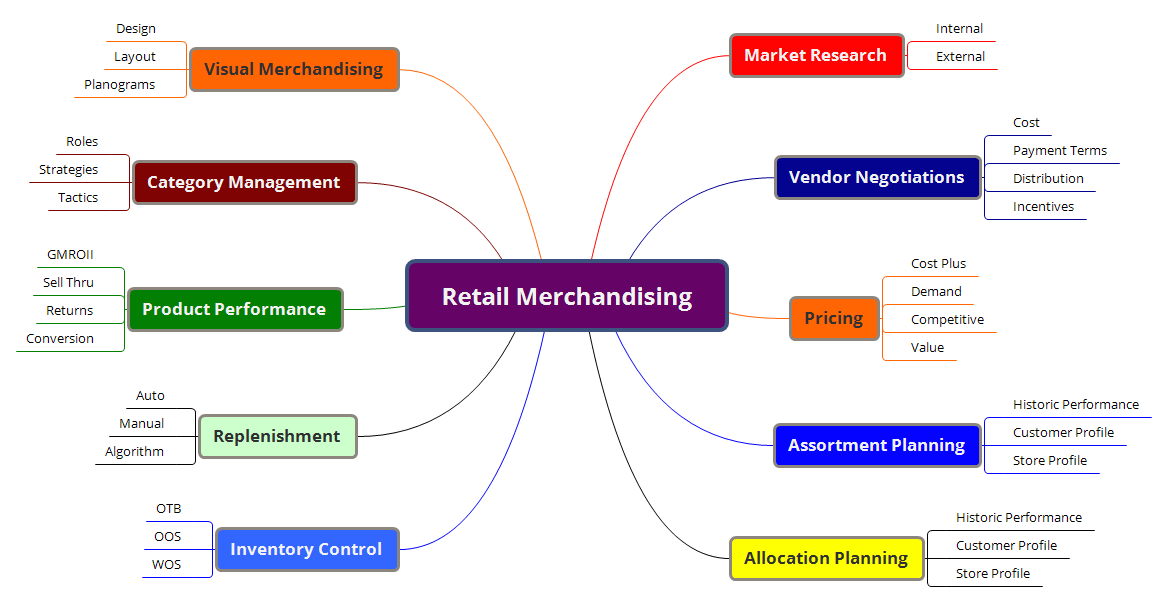
Results That Pay Off Instantly – Practical, Applicable, Actionable Insights & Techniques
April 23-24-25-26, 2024
11 AM – 2 PM EST (New York) (3 Hours Each Day)(12 Hours Total)
LIVE Sessions
Live & Interactive
Slide deck and the Recording of the Sessions will be sent to All Registrants
Trusted by the smartest employees at these organizations (partial list) 
 |
 |
 |
 |
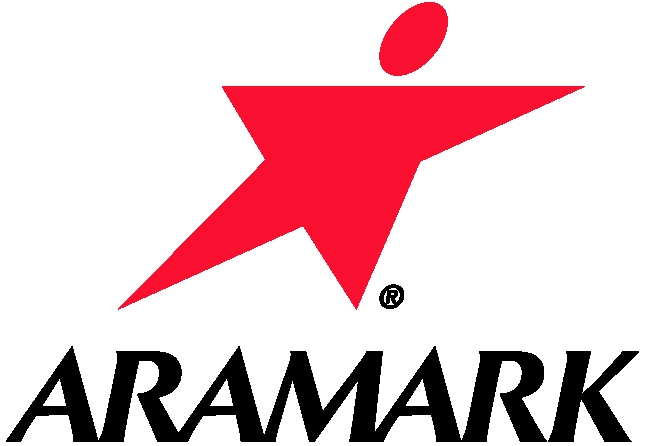 |
 |
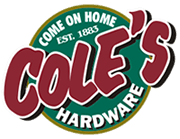 |
 |
 |
 |
 |
 |
 |
 |
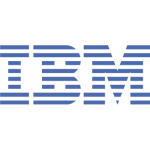 |
 |
 |
 |
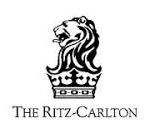 |
 |
 |
 |
 |
 |
 |
 |
 |
 |
Here’s what Customers said:
“A Golden way to manage and improve my work as Category Specialist.”
“Very insightful with solid and workable ways to grow and improve your business.”
“Top notch, excellent material and information. Presentations and videos were excellent.”
The content of this interactive program is geared towards the study of ten Category Management Tools, each in great detail – Now with AI Integration.
The learning objective of the Advanced Category Management Workshop is for participants to advance from Execution Level Knowledge to Expert Level Knowledge of Category Management by expanding and elaborating on every aspect of the use of the ten important tools that were introduced to participants previously.
This learning objective is achieved through delivery of detail level, leading edge information supported by extensive examples and practice sessions as well as the use of mind maps, and specially designed subject specific working documents and checklists.
In addition, each section (tool) has content about integration of AI (Artificial Intelligence) for improved accuracy and better results. An example of this is shown with the Target Customer Definition Tool below:
Category Management Tools Covered

Planning a product category involves identifying the goals and objectives for the category, analyzing market trends and customer needs, and developing a strategy for introducing and promoting products within the category.
Some steps that are involved in planning a product category include:
- Define the goals and objectives: Determine what you want to achieve with your product category, such as increasing market share, generating revenue, or meeting customer needs.
- Conduct market research: Analyze market trends, customer needs, and competitors within the product category to understand the market landscape and identify opportunities.
- Develop a product strategy: Based on your market research, determine the target market for your products, the features and benefits they will offer, and the pricing strategy you will use.
- Create a product roadmap: Develop a timeline for introducing and launching products within the category, including any necessary research and development, production, and testing.
- Develop a marketing plan: Create a plan for promoting and selling products within the category, including channels such as advertising, social media, and in-store merchandising.
- Monitor and review progress: Continuously track and analyze the performance of your products within the category and make adjustments as needed to meet your goals and objectives.
By following these steps, you can create a comprehensive plan for introducing and managing a product category effectively.

Category workload is a term that refers to the amount of work that is required to complete a specific category of tasks or responsibilities.
In the context of a business or organization, category workload might refer to the total amount of work that is required to complete all the tasks within a particular department, team, or project.
Category workload can be measured in a variety of ways, such as by the number of tasks or the amount of time it takes to complete them.
It is important to consider category workload when planning and organizing work, as it can help ensure that tasks are distributed evenly and that team members are not overwhelmed with too much work.
There are a number of factors that can affect category workload, including the complexity and difficulty of the tasks, the availability of resources and support, and the skill level of the team members.
To manage category workload effectively, it may be necessary to adjust the distribution of tasks, allocate additional resources, or provide additional training or support as needed.
Category workload can be an important consideration in a variety of settings, including in businesses, government agencies, and other organizations.
By understanding and managing category workload effectively, it is possible to improve productivity, reduce stress and burnout, and increase overall efficiency and effectiveness.

A product evaluation matrix is a tool used to compare and evaluate different products based on a set of predefined criteria.
It is often used in the process of selecting the best product for a particular purpose or need.
To create a product evaluation matrix, you first need to identify the criteria that you will use to evaluate the products.
These criteria should be relevant to the purpose of the product and the needs of the user. Some examples of criteria that might be included in a product evaluation matrix are:
- Price
- Quality
- Features
- Ease of use
- Compatibility with other products
- Customer support
- Brand reputation
- Sustainability
Once you have identified the criteria, you can create a table or spreadsheet with the products listed in one column and the criteria listed in the rows.
You can then assign a rating or score to each product based on how well it meets each criterion. This can be done through research, testing, or other methods.
Using a product evaluation matrix can help you make informed decisions about which products to purchase or recommend, as it allows you to objectively compare the relative strengths and weaknesses of different options.
It can also be a useful tool for identifying areas where a product might need improvement.

A target customer definition tool is a tool that helps businesses identify and define their target customer or target market.
This is an important step in the process of marketing a product or service, as it allows businesses to focus their efforts on the specific group of people most likely to be interested in their offerings.
There are several different ways to define a target customer, but some common methods include:
- Demographic characteristics: Age, gender, income level, education level, occupation, geographic location, etc.
- Behavioral characteristics: Needs, preferences, habits, values, attitudes, etc.
- Psychographic characteristics: Interests, hobbies, lifestyle, personality, etc.
To use a target customer definition tool, you will need to gather information about your potential customers and then use this information to create a detailed profile or persona of your ideal customer.
This profile should include as much detail as possible about your target customer, including their demographics, behaviors, and psychographics.
Once you have defined your target customer, you can use this information to tailor your marketing efforts to better reach and engage this group.
This can include creating targeted advertising campaigns, developing marketing materials that appeal to your target customer, and focusing your sales efforts on channels and platforms that are likely to be used by your target audience.
AI Integration to the Topic:
Artificial Intelligence (AI) can provide numerous benefits when integrated into a target customer definition tool. Here’s how:
By using AI, businesses can define their target customers more accurately and efficiently, enabling them to tailor their products, services, and marketing strategies more effectively to meet customer needs. This, in turn, can improve customer acquisition and retention, and ultimately, business performance. Lesson 1: How AI Helps with Target Customer DefinitionIntroductionThe advent of Artificial Intelligence (AI) has been a game-changer in many business processes, and customer targeting is no exception. In this lesson, we will explore how AI can enhance the process of target customer definition. Benefits of Using AI in Target Customer DefinitionAI has multiple benefits when applied to defining target customers:
Practical Applications of AI in Target Customer DefinitionLet’s look at some practical ways businesses can apply AI to define their target customers:
ConclusionBy leveraging AI, businesses can better define their target customers, leading to more effective marketing strategies, improved customer relationships, and ultimately, increased sales and growth. In the next lesson, we will delve into the practical steps of implementing AI for target customer definition, including selecting appropriate AI tools and integrating them into your processes. Lesson 2: Implementing AI in Target Customer DefinitionIntroductionIn the previous lesson, we learned about the benefits of using AI in target customer definition. Now, let’s explore the practical steps you can take to implement AI in this process. Step 1: Identify the NeedStart by understanding where AI can add value. Do you need more detailed customer segmentation? Are you looking to predict customer behavior? Once you identify your needs, you’ll be able to choose the right AI tools. Step 2: Choose the Right AI ToolsThere are a plethora of AI tools available for customer targeting. When selecting a tool, consider its functionality, ease of use, integration capabilities, cost, and the support provided by the vendor. Step 3: Prepare Your DataAI systems are only as good as the data they are fed. Ensure your data is clean, organized, and relevant. It may involve gathering historical data about your customers, including their buying patterns, interactions with your business, demographics, etc. Step 4: Integrate AI with Existing SystemsIntegrate your chosen AI tool with your existing customer relationship management (CRM) system or other relevant systems. The level of integration will depend on the specific AI tool and your system infrastructure. Step 5: Train Your AI SystemUsing your prepared data, train your AI system. This will often involve setting parameters, running algorithms, and refining the output. You may need technical expertise for this step. Step 6: Test and RefineBefore fully deploying the AI tool, test it extensively. Check the accuracy of its output and refine it as needed. After satisfactory testing, it’s time to fully deploy the AI tool. Step 7: Monitor and UpdateAfter deployment, continue monitoring the AI tool’s performance and make updates as needed. AI tools require ongoing management to ensure they remain effective as your business evolves. ConclusionImplementing AI in target customer definition is a significant task, but by following these steps, you can make the process more manageable. Remember, the goal is to improve your understanding of your customers, so continually monitor and refine your system to ensure it’s providing the insights you need. In our next lesson, we’ll explore the challenges that may arise when implementing AI in target customer definition and how to address them. Stay tuned! Lesson 3: Overcoming Challenges in Implementing AI for Target Customer DefinitionIntroductionWhile AI provides significant benefits, implementing it can present several challenges. Let’s explore these challenges and identify solutions to ensure a smooth and effective AI integration. Challenge 1: Data Quality and ManagementAI relies on high-quality data. If the data is incomplete, inconsistent, or outdated, it could lead to inaccurate insights. Solution: Regularly clean and update your data. Consider implementing data management tools and practices to maintain data quality. Challenge 2: Integration with Existing SystemsIntegrating AI tools with your existing systems can be complicated and may disrupt your current operations. Solution: Plan your integration process carefully. This might involve updating your existing systems or finding an AI tool that is compatible with your current setup. Also, consider hiring experts or working with your vendor to ensure a smooth integration. Challenge 3: Technical ExpertiseThe implementation and management of AI tools can require specialized knowledge. Solution: Provide training for your staff or consider hiring experts. You can also opt for user-friendly AI tools that require less technical expertise. Challenge 4: CostThe costs of AI tools and their implementation can be substantial. Solution: Before investing, carefully consider the potential return on investment. In many cases, the improved efficiency and insights provided by AI can more than offset the initial cost. Challenge 5: Employee ResistanceLike any change, the implementation of AI can meet resistance from employees who are comfortable with existing processes. Solution: Effective change management can help ease this transition. This could involve clear communication about the benefits of AI, involving employees in the implementation process, and providing adequate training. ConclusionImplementing AI for target customer definition comes with challenges, but they are surmountable. By recognizing these challenges and proactively addressing them, you can make the most of what AI has to offer. In the next lesson, we will envision the future of AI in target customer definition, discussing upcoming trends and how to prepare for them. Lesson 4: The Future of AI in Target Customer DefinitionIntroductionAs AI continues to evolve and improve, it’s crucial to understand where this technology is heading, especially in the realm of target customer definition. This lesson will explore some trends to watch out for in the near future. Part 1: Emerging TrendsSeveral trends are shaping the future of AI in target customer definition:
Part 2: Preparing for the FutureTo stay ahead, businesses can take several steps:
ConclusionThe future of AI in target customer definition is exciting. By understanding these trends and preparing for them, businesses can be ready to make the most of the opportunities AI has to offer. In our next lesson, we’ll consolidate what we’ve learned so far and do a quick review. We will also discuss how businesses can use AI to enhance their overall strategy for target customer definition. Stay tuned! Lesson 5: Review and Incorporating AI into Target Customer Definition StrategyIntroductionIn this final lesson, we’ll recap the key points from the course and provide guidance on integrating AI into your overall strategy for target customer definition. Part 1: Recap of Key Points
Part 2: Incorporating AI into Your StrategyHere are some recommendations on how to incorporate AI into your target customer definition strategy:
ConclusionAI has a transformative potential for target customer definition, and by incorporating it into your strategy, you can make the most of the opportunities it offers. Remember to continually reassess and update your strategy to stay abreast of advancements in AI. Congratulations on completing this course! We hope it’s been a valuable journey and you’re now well-equipped to leverage AI in defining your target customers. Best of luck in your AI journey! |

A category assessment tool is a tool used to evaluate and assess the performance or effectiveness of a particular category or group of items.
This might include evaluating the quality of products within a particular category, the efficiency of processes or systems within a particular department or team, or the effectiveness of a particular marketing campaign.
Category assessment tools can take many different forms, depending on the specific needs and goals of the assessment.
Some common types of category assessment tools include:
- Surveys and questionnaires: These tools can be used to gather feedback and opinions from customers, employees, or other stakeholders about a particular category.
- Analytical tools: These tools, such as spreadsheets or data visualization software, can be used to analyze data and trends related to a particular category.
- Observation and evaluation: This can involve physically observing the performance or effectiveness of a particular category and providing feedback or making recommendations for improvement.
To use a category assessment tool, you will need to identify the specific category or group of items that you want to evaluate, and then select the appropriate tool or combination of tools to use.
You will then need to gather data or feedback using the chosen tool(s) and analyze the results to draw conclusions about the performance or effectiveness of the category.
Category assessment tools can be an important tool for businesses and organizations to ensure that they are meeting their goals and improving over time.
They can also be useful for identifying areas for improvement and making informed decisions about how to allocate resources and make changes.
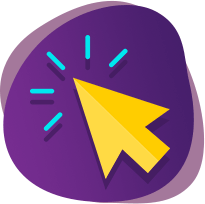
A category balanced scorecard is a tool that helps businesses and organizations track and measure the performance of a particular category or group of items.
It is based on the balanced scorecard framework, which was developed in the 1990s as a way to evaluate an organization’s performance from multiple perspectives.
A category balanced scorecard typically includes four key perspectives: financial, customer, internal process, and learning and growth.
Each perspective is represented by a set of metrics or indicators that are used to measure the performance of the category.
For example, if the category being evaluated is a particular product line, the financial perspective might include metrics such as revenue and profit margin.
The customer perspective might include metrics such as customer satisfaction and loyalty.
The internal process perspective might include metrics such as efficiency and quality, and the learning and growth perspective might include metrics such as innovation and employee development.
To use a category balanced scorecard, you will need to identify the key perspectives and metrics that are most relevant to the category being evaluated.
You will then need to gather data on these metrics and track them over time to see how the category is performing.
This can help identify areas for improvement and guide decision-making related to the category.
Category balanced scorecards can be an effective tool for businesses and organizations to track and improve the performance of a particular category or group of items, such as a product line, a department, or a project.
They can also be useful for benchmarking performance against industry standards or internal goals.

A supplier balanced scorecard is a tool that helps businesses and organizations evaluate the performance of their suppliers.
It is based on the balanced scorecard framework, which was developed in the 1990s as a way to evaluate an organization’s performance from multiple perspectives.
A supplier balanced scorecard typically includes four key perspectives: financial, customer, internal process, and learning and growth.
Each perspective is represented by a set of metrics or indicators that are used to measure the performance of the supplier.
For example, the financial perspective might include metrics such as the supplier’s pricing and payment terms.
The customer perspective might include metrics such as the supplier’s delivery reliability and customer service.
The internal process perspective might include metrics such as the supplier’s efficiency and quality, and the learning and growth perspective might include metrics such as the supplier’s innovation and sustainability efforts.
To use a supplier balanced scorecard, you will need to identify the key perspectives and metrics that are most relevant to your business and your relationship with the supplier.
You will then need to gather data on these metrics and track them over time to see how the supplier is performing.
This can help you make informed decisions about whether to continue working with the supplier and identify areas for improvement in the supplier relationship.
Supplier balanced scorecards can be an effective tool for businesses and organizations to evaluate and manage their relationships with suppliers.
They can help ensure that suppliers are meeting the needs and expectations of the business and help identify opportunities for improvement in the supplier relationship.

A premium brand strategy is a marketing strategy that focuses on positioning a brand as high-quality, exclusive, and luxury.
This strategy is often used by companies that sell high-end or luxury products or services, and the goal is to create a strong brand identity that is perceived as being worth the higher price point.
There are a number of tactics that companies can use to implement a premium brand strategy, including:
- Offering high-quality products or services: Premium brands are often associated with quality, so it is important to ensure that the products or services being offered are of the highest possible quality.
- Creating an exclusive image: Premium brands often seek to create an image of exclusivity, which can be achieved through careful branding and marketing efforts. This might include using luxury materials and packaging, limiting the distribution of products, or creating a sense of scarcity.
- Leveraging the brand’s history and heritage: A brand’s history and heritage can be an important part of its identity and can help to differentiate it from competitors. Highlighting the brand’s history and heritage can be a powerful way to create a premium image.
- Focusing on customer experience: Providing a high-quality customer experience can be an important part of a premium brand strategy. This might include offering personalized service, providing exceptional support, and creating an overall sense of luxury for customers.
A successful premium brand strategy requires a strong focus on quality and attention to detail, as well as a clear understanding of the target market and what they value.
By implementing a premium brand strategy, businesses can position themselves as leaders in their industry and create a strong and loyal customer base.

A category tactogram is a visual representation of the tactics or actions that a business or organization plans to take in order to achieve a specific goal or objective within a particular category or group of items.
It is similar to a mind map or flow chart, in that it helps to organize and visualize the steps that need to be taken in order to reach a desired outcome.
To create a category tactogram, you will need to start by identifying the goal or objective that you want to achieve within the category.
You can then brainstorm the different tactics or actions that you will need to take in order to reach this goal.
These tactics might include things like marketing campaigns, product development, process improvements, or other activities.
Once you have identified the tactics that you will need to take, you can organize them into a visual representation, such as a mind map or flow chart.
This can help you see the overall strategy and identify any potential gaps or challenges that you might need to address.
Category tactograms can be an effective tool for businesses and organizations to plan and execute strategies within a particular category or group of items.
They can help to clarify goals and objectives, identify the steps that need to be taken to achieve them, and provide a visual representation of the overall strategy.

A category plan implementation scheduling tool is a tool that helps businesses and organizations plan and schedule the implementation of a particular category plan.
A category plan is a detailed document that outlines the actions and strategies that a business or organization will take in order to achieve specific goals or objectives within a particular category or group of items.
A category plan implementation scheduling tool can take many different forms, depending on the specific needs and goals of the plan.
Some common types of scheduling tools include:
- Gantt charts: These are visual representations of a project schedule that show the tasks that need to be completed, the dependencies between tasks, and the timeline for completing them.
- Calendars: These can be used to schedule specific tasks or activities at specific times and dates.
- Project management software: There are many different project management tools available that can be used to create and manage project schedules, including Asana, Trello, and Basecamp.
To use a category plan implementation scheduling tool, you will need to identify the specific tasks and activities that need to be completed in order to implement the category plan, and then use the chosen tool to create a schedule for completing these tasks.
This can help ensure that the plan is implemented effectively and efficiently, and that all necessary tasks are completed on time.
Category plan implementation scheduling tools can be an important tool for businesses and organizations to ensure that they are able to execute their plans effectively and achieve their goals within a particular category or group of items.
They can help to reduce the risk of delays or missed deadlines and improve overall efficiency and productivity.
Duration: 12 Hours (4 days x 3 hours)
Methods: Online Presentations and Delivery of Advanced Information supported by Extensive Examples, Do-it-Yourself Practice Sessions with Instructor Follow-up and Homework Assignments.
Who Should Attend: This workshop is suited to Directors of Category Management and Category Managers, Buyers, Brand Managers, Marketing Managers, Product Managers, Product Development Managers, Marketing Research Managers. Entire marketing and product team participation is encouraged.
Why You Should Attend:
 Practical, applicable and actionable content delivered by top experts to drive your sales, productivity and profitability. Proven to increase those metrics by double digits. Check out the testimonials.
Practical, applicable and actionable content delivered by top experts to drive your sales, productivity and profitability. Proven to increase those metrics by double digits. Check out the testimonials.
 Value: Apart from acquiring complete understanding, participants will enjoy a 30-Day unlimited Q&A through email after the workshop (A $1,000 value by itself)
Value: Apart from acquiring complete understanding, participants will enjoy a 30-Day unlimited Q&A through email after the workshop (A $1,000 value by itself)
 ROI: Return on investment can be as high as 100 times the registration fee based on your company revenues and how many techniques, ideas and methods from the workshop you implemented.
ROI: Return on investment can be as high as 100 times the registration fee based on your company revenues and how many techniques, ideas and methods from the workshop you implemented.
 Positions you as an expert .
Positions you as an expert .
 Creates a “larger picture” mentality.
Creates a “larger picture” mentality.
 Improves your standing as a Retail Management Leader
Improves your standing as a Retail Management Leader
 Six hours that will produce a lifetime of results.
Six hours that will produce a lifetime of results.
Workshop Fee: $895 per person; Group rates are available.
Contact: For further information and/or to register for this program, please contact Josephine Hill, Events & Client Service Manager at johill@dmsretail.com
Advanced Category Management Workshop Online
April 23-24-25-26, 2024
11 AM – 2 PM EST (New York) (3 Hours Each Day)(12 Hours Total)
LIVE Sessions
LIVE & INTERACTIVE
Slide deck and the Recording of the Sessions will be sent to All Registrants
Register Now!
Only $895/person
![]()
Contact: Josephine Hill
email: JHill@retailmanagementworkshop.com
Phone: +1 (813) 556-6437 or +1 (800) 953-4501
Trusted by the smartest employees at these organizations (partial list) 
 |
 |
 |
 |
 |
 |
 |
 |
 |
 |
 |
 |
 |
 |
 |
 |
 |
 |
 |
 |
 |
 |
 |
 |
 |
 |
 |
 |















